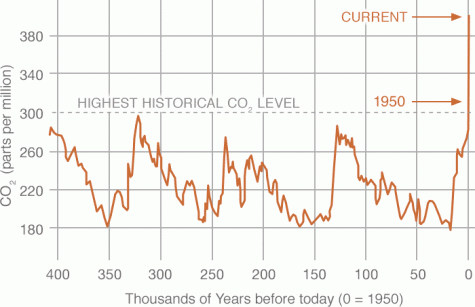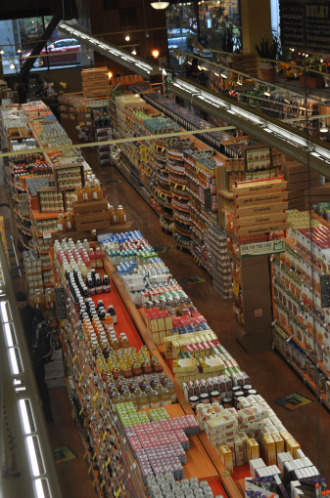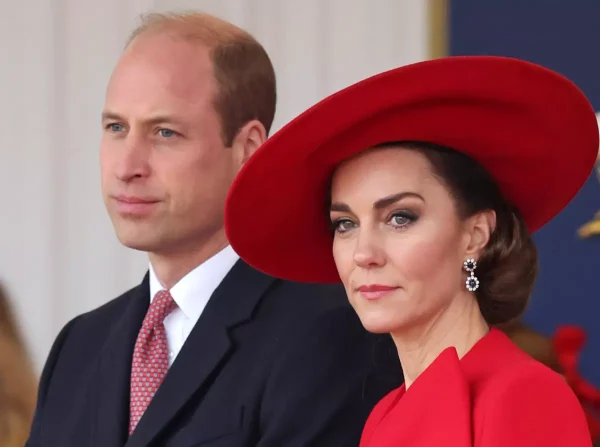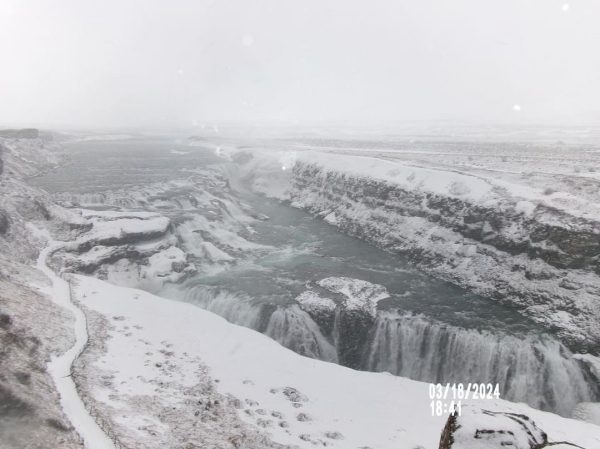Combating Climate Change
March 14, 2019
“Climate change is not like Santa where you can ‘believe in it or not’,” is how AP Environmental teacher Mrs. Bates described the ongoing problem of climate change. “Climates have changed. They will change. What people argue about is what humans have to do with it.” For as long as scientists have tracked climates, there have been warming and cooling patterns. However, since the late 19th century, the earth has warmed about 0.9 degrees Celsius. This may not sound like much, but to most scientists, this number is concerning. In terms of the current warming trend, many scientists agree that it is due to high levels of greenhouse gases, mainly carbon dioxide. The high levels of carbon dioxide are directly linked to human activity, most notably burning fossil fuels.
Climate change is a truly global issue. It affects students of Pennridge High School and those living across the planet. Potential impacts of climate change include an increase of heat-related deaths, the frequency and intensity of extreme weather events, food supply issues, animals going extinct, and much more. These effects will fall disproportionately on lower socio-economic classes.
Fossil fuels carry a lot of the blame for climate change due to the high levels of CO2 they emit. Alternative forms of energy include wind and solar power, which release no CO2. Petroleum is a huge fossil fuel in the United States, used as gas for most cars. Although electric cars are on the rise, the average consumer is unable to purchase them due to high prices; alternatives include hybrid cars which are much cheaper. Although there is more research into alternative forms of energy than ever before, it is unlikely that Americans will be able to drastically reduce their reliance on fossil fuels. Other countries, such as Germany, have worked to become more sustainable in recent years. However, shifting to renewable forms of energy requires large investments that many governments aren’t willing to make.
So, what can you do to help combat climate change? Although it is a global problem, there are many small things you can do within your community to make a difference. Hundreds of students drive to Pennridge each day, so why not ride with a friend? Carpooling is extremely environmentally friendly and helps to reduce CO2 emissions. Reusable bags and water bottles helps to reduce the large amounts of plastic going into landfills each day. Switching out incandescent light bulbs for LEDs or CFLs, can help reduce electricity consumption. Eating a plant-based diet or trying “Meatless Mondays”, reduces the amount of Methane that is released by various types of animal farming. Buying local products is extremely beneficial and we are lucky to live in an area with large amounts of farms. Mr. Plawa encourages students to “Reduce, reuse, and recycle. Avoid buying single use items that you simply throw away after using them.”
Climate change is often a controversial and disheartening topic. However, it is important to remember that it is not a political issue. Climate change is real problem. There is scientific evidence to prove so. It is also important to remember that climate change is not something that cannot be solved. Getting people to change their mindset and everyday lives to be more ecofriendly is hard, but it is not impossible. Perhaps the best thing you can do is educate yourself and learn more about climate change. Decide if taking steps to combat is something you would be willing to do. All it takes is one person making some small changes. As Margaret Mead once said, “Never doubt that a small group of thoughtful, committed citizens can change the world; indeed, it is the only thing that ever has.”









